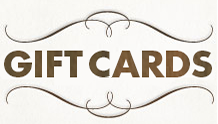Proper Sizing & Care
Hat Size Guidelines
How to determine your hat size
Measuring Instructions:
If you have not purchased a new hat recently or do not know your hat size, measure your head. Sizes vary with hair styles, age, weight gain and loss. Use a tape measure to determine the circumference of your head to the nearest 1/8 of an inch by measuring across the widest part of the head, above the eyebrows and ears. Use the Sizing Chart to convert this measurement in inches to a hat size.
Sizing Chart
| XS | S | M | L | XL | XXL | XXXL | ||||||||
| Size |
6 1/2
|
6 5/8
|
6 3/4
|
6 7/8
|
7
|
7 1/8
|
7 1/4
|
7 3/8
|
7 1/2
|
7 5/8
|
7 3/4
|
7 7/8
|
8
|
|
| Inches |
20 1/2
|
20 3/4
|
21 1/8
|
21 1/2
|
21 7/8
|
22 1/4
|
22 5/8
|
23
|
23 1/2
|
23 7/8
|
24 1/4
|
24 5/8
|
25
|
|
| Metric |
52
|
53
|
54
|
55
|
56
|
57
|
58
|
59
|
60
|
61
|
62
|
63
|
64
|
|
Please Note:
The above guide is based on industry standards. As with all manufactured goods there is some variance with different manufacturers and styles. We are not responsible if you order the wrong size. We charge for reshipping on exchanges.
If you have any questions, please contact us at [email protected]
Hat Care:
There are many things you can do or not do to help maintain the life of your hat.
DON'T:
- Pick the hat up by the crown - You've seen it in all the old Hollywood movies, but handling your hat by pinching the crown is a sure way to ruin its shape and the integrity of the material.
- Leave your hat in a hot car - Heat and humidity are important tools used when making a hat, and they can just as easily unmake a hat.
- Set your hat down on its brim - The brim is not a flat surface, and leaving your hat this way can flatten it out over time.
- Roll it up - Remember, any hat is crushable if you try hard enough. Whether or not it will ever look the same again is another matter. However, it is possible to find truly rollable hats thru finer milliners world wide. Please consult with your haberdasher before attempting.
- Wear it in a rainstorm - Hats offer some protection from the elements, but very few are intended to be waterproof. Many materials can shrink or lose shape if thoroughly soaked.
- Loan it to a friend - The number one cause of irreparable hat damage; trust us.
DO:
- Handle your hat by its brim - The brim is a single plane of material, so you can't crush it between your fingers or crease it.
- Set the hat down on its crown - Most hat crowns provide a better surface for the hat to sit on than the brim, and it lets the hat air out when you take it off. Plus, it'll encourage you to pick it back up by the brim!
- Treat your hat like a fine pair of shoes - Don't wear the same one every day, and take care of it when it's not on your head. A hat stand or hook will let it get air circulation and maintains the hat shape while preventing mustiness and mold damage.
- Turn the sweatband out when damp, use a hat retainer - Moisture and perspiration can cause a hat to shrink as it dries. Turning a damp sweatband inside out will allow it to dry more evenly, and using a hat retainer, whether wood, plastic or cardboard, will help keep it from shrinking when not on your head; just like shoe-trees for shoes..
- Brush or wipe off dust and lint regularly - It's much easier keep a hat clean if you prevent build up. Brush the dust off of a felt hat with a counter-clockwise motion, or gently wipe the dust off of straw with a slightly damp cloth.
Prevention is the best medicine for hats, and a well-kept hat will age, not deteriorate. The higher quality the materials of a hat are, the more likely that it can be restored to a decent, wearable condition. If you have questions about restoration services or what you can do to care for your hat, feel free to contact us at [email protected]
















